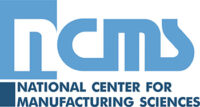NCMS Technology Briefs highlight NCMS’s cultivation and growth of innovative technologies. Through our management of government and industry collaborations, we’ve gained insights into novel approaches and best practices that can assist all companies to navigate the sometimes complex journey toward advancement. Based on the results of NCMS technology projects, the briefs show the applicability and usefulness of proven technical advances—all in an effort to speed adoption and eliminate duplication of effort. NCMS is pleased to share these insights to support U.S. manufacturing competitiveness.
Introduction
In manufacturing and many other sectors, unplanned vehicle downtime is extremely expensive, with an hourly cost of $2.3 million in the automotive sector, according to a recent report. To prevent unplanned vehicle and asset downtime from affecting profits, it is essential for manufacturing companies—as well as any business that relies on fleets of vehicles—to invest in predictive maintenance. A data-driven approach, predictive maintenance uses condition-monitoring technologies so that technicians can service vehicles and assets before they break down. Benefits of predictive maintenance include improved asset performance, longer asset lifespans, and reduced maintenance costs, as businesses extract more value from existing assets. In a recent survey, 95 percent of respondents, which included those in the transportation sector, reported that predictive maintenance improved at least one key maintenance value driver such as improved vehicle and asset uptime, extended asset lifespans, reduced costs, lowered safety risks, and higher customer satisfaction.
Predictive maintenance has been significantly advanced by the Internet of Things (IoT), which assists organizations in moving from a reactive approach to maintenance to a proactive and data-driven one. IoT refers to the network of interconnected physical devices that can collect and exchange data over the internet. A specific application of IoT technology, telematics, which is primarily focused on vehicles and transportation. Telematics collects, transmits, and manages data about vehicle location, performance, and more. This Technology Brief, the first in our predictive maintenance series, highlights two recent NCMS initiatives that have improved telematics for predictive maintenance.
Advantages of Telematics for Predictive Maintenance
Predictive maintenance improves legacy maintenance practices, which rely on pre-planned maintenance schedules, asset projected time to failure, and recommendations from the OEM. To improve asset operation and longevity, predictive maintenance utilizes data from multiple sources including enterprise resource planning (ERP) systems, historical maintenance and repair data, and sensors. GPS and onboard diagnostics systems collect data such as vehicle location data, speed, tire pressure, oil quality, filter status, battery life, brake life, engine and hydraulic oil degradation, alternator performance, starter amp draw, and more. This data is then transmitted wirelessly to a central server or cloud-based platform, where it is processed and analyzed with data analytics and machine learning algorithms to identify patterns, trends, and anomalies that can indicate potential issues or areas for improvement. Based on the analysis, telematics systems generate actionable insights to predict potential maintenance needs.
While telematics is used most frequently in the automotive and fleet management industries, the technology is also useful in the manufacturing sector, especially for companies that have vehicles and other assets in multiple locations. Telematics can be used to monitor usage, performance, and location. This is achieved through real-time data collection and analysis, enabling businesses to improve security, optimize logistics, prevent downtime, enhance efficiency, and reduce costs. Two recent NCMS-led initiatives advanced telematics technology to improve predictive maintenance in the manufacturing sector and other industries.
Telematics Facilitates Streamlined Data Capture and Migration
A recent NCMS initiative used telematics to create a fully end-to-end predictive maintenance solution to securely streamline the migration of the right vehicle data, to the right stakeholder, at the right time. In this collaboration, NCMS brought together experts from the Army, Navy, and industry partners Oshkosh Defense and Detroit Defense. The solution was demonstrated for Army tactical wheeled vehicles, but it can be adapted for any type of vehicle or asset. The solution captures data from deployed vehicles, via digital sensors, that collect and transmit the data from vehicles via secure, cellular communication, to a data repository. Then, predictive logistics algorithms are applied to this data to obtain insights that improve vehicle sustainment through better, data-driven decisions.
Insights are displayed to users in the form of dashboards on a secure, web-based portal. Users can access the dashboards on handheld tablets, both at the tactical edge of operation and at the enterprise level. Within minutes of the vehicle being operated, dashboards fill up semi-circle gauges as valid signals are ingested, providing a clear indicator of which systems are performing as expected and which systems are not. The overview dashboard displays the total number of vehicles, the number of vehicles with faults, the number of vehicles with CBM alerts, the engine hours, and the miles traveled. The dashboard also displays a “Maintenance Details” report, which indicates the status of system health features such as engine oil, fuel filters, and engine oil filters.
Data-driven diagnostic/prognostic algorithms identify the key indicators and trends of oil degradation. The correlations between the sensor values, vehicle usage, and oil sample data enable an accurate estimation of oil life. The predictive analytics employed in this initiative yielded significant benefits: engine oil (377 gallons of oil saved over two years), material cost avoidance ($4,350 saved on oil changes for 29 trucks over two years), and readiness improvements (232 hours in vehicle downtime saved over 29 trucks over two years). This customizable tool can also be used for manufacturing equipment, power generators, aircraft, ships, and other complex motorized assets. Benefits include reduced maintenance costs, improved asset performance, and increased asset time in-service.
Telematics for Data-Driven Asset Assessments
Another recent NCMS-led collaboration between the Army and industry partner JCB successfully demonstrated a telematics system: JCB LiveLink. With this system, secure and remote management—including monitoring maintenance activities—can be performed anywhere in the world, on any vehicle, equipment, or asset installed with the system. For predictive maintenance, this system maximizes the operational condition of assets and provides critical alerts to avoid serious mechanical and electrical problems.
The JCB LiveLink system supplies data on vehicle or equipment location, maintenance history, engine status (on/off), distance traveled, maximum speed, vehicle life (hours), suspension modes, fuel usage/level, and service requirements (operating hours and time). Another feature of this system—called diagnostic trouble code—is an excellent tool for resolving issues before they became potentially high-level failures. The use of this system can lessen or even eliminate unexpected breakdowns, enable technicians to perform maintenance at the point of need, facilitate the ordering of needed parts, reduce wasted oil, generate lower hazardous material, and save costs.
Additionally, the system monitors maintenance schedules and provides notifications of service requirements. Assets’ operational conditions can be maximized with non-routine “attention notifications” and tracked system health to provide critical alerts for serious mechanical and electrical problems. Some examples of issues tracked include differential pressure, oil filter, air filter blocked, and water in fuel.
The integration of the JCB LiveLink system into assets produces a report of fault codes that can be consolidated and filtered to the unique issues with each asset. By providing the necessary data and notifications to perform preventative maintenance, the system helps organizations avoid asset failures. This system can be used by manufacturing companies, as well as businesses in other sectors, to remotely manage equipment and vehicles.
Benefits of Telematics for Vehicles and Other Large Assets
Telematics technologies play a key role in predictive maintenance by facilitating real-time monitoring and analysis of vehicle and asset performance. Benefits of using telematics include:
- Real-time tracking of vehicles and assets including geofencing, which allows manufacturers to monitor the location of their assets
- Ability to scale to meet the needs of the number of vehicles and assets owned by companies
- Real-time data collection on key vehicle and asset parameters to facilitate data-driven decision making
- Identification of areas where fuel efficiency can be improved
- Early warning signs of potential equipment issues, allowing for proactive maintenance and repair, leading to reduced vehicle and asset downtime
- Affordable for small companies, with pricing options ranging from basic to advanced features
- User-friendly features, such as web portals and mobile apps




